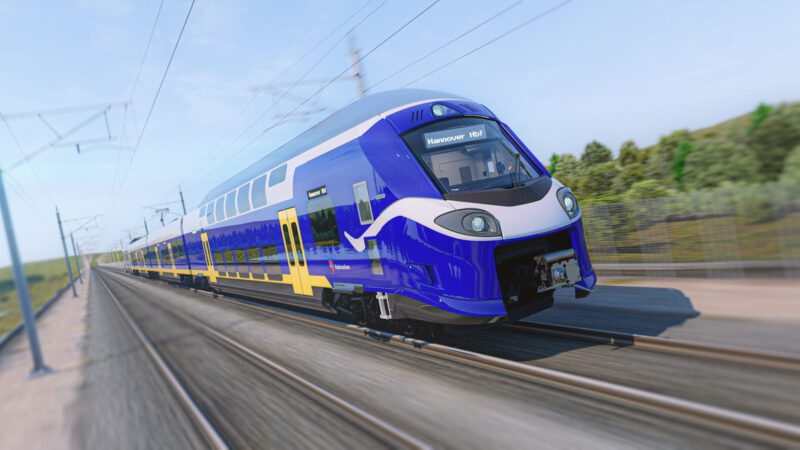The German state of Lower Saxony will redirect its attention away from hydrogen fuel-cell trains to battery electric trains, with the local transport authority announcing its plans to operate 102 battery electric trains from 2029 onwards.
Lower Saxony’s state-owned transport company LNVG (thankfully short for Landesnahverkehrsgesellschaft Niedersachsen) announced at the end of July that it will use only battery electric trains after it determined that they were “cheaper to run” than hydrogen fuel-cell alternatives.
LNVG had already begun testing hydrogen fuel-cell trains, and 14 Alstom Coradia iLint hydrogen fuel-cell trains began operating along passenger routes in Lower Saxony a year ago.
The supposedly “world first” hydrogen train network relied on daily fuelling from the Linde hydrogen filling station and each train was able to travel 1,000 kilometres. At least two pre-series Alstom Coradia iLint trains had been in operation on the line since September 2018.
However, following extensive research, LNVG has decided to abandon its hydrogen plans in favour of battery electric trains, declaring that from 2029 the network will begin introducing 102 new battery electric trains.
LNVG found that the electric trains – able to be charged using overhead pantograph lines or at so-called “charging islands” to avoid the need for overhead contact wires – are cheaper than hydrogen and diesel alternatives.
LNVG expects the final diesel-fuelled trains to leave the tracks by 2037. Among the battery powered options to be operating on the LNVG rail network are Alstom Coradia Stream units, which can reach a maximum speed of 200km/h and can run on non-electrified lines using batteries.
In early 2021, Alston and LNVG signed an agreement for 34 Coradia Stream High Capacity double-decker EMU trains, and which will be in service by the end of 2024.
Joshua S. Hill is a Melbourne-based journalist who has been writing about climate change, clean technology, and electric vehicles for over 15 years. He has been reporting on electric vehicles and clean technologies for Renew Economy and The Driven since 2012. His preferred mode of transport is his feet.


